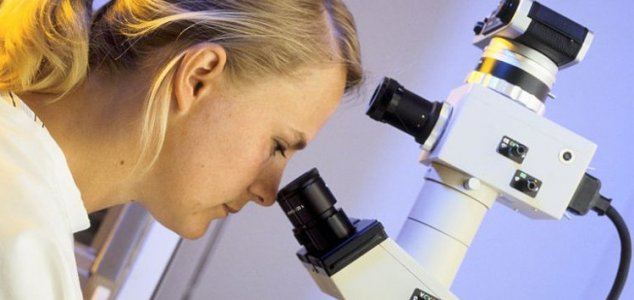Science & Technology
December 16, 2018 · 10 comments
10 comments

The new technique is a big improvement over conventional methods. Image Credit: CC BY-SA 3.0 CSIRO
The technique involves first creating the desired structure by patterning a polymer scaffold with a laser, then shrinking it down using a process known as implosion fabrication.
"It's a way of putting nearly any kind of material into a 3D pattern with nanoscale precision," said biological engineering and nanotechnology scientist Professor Edward Boyden.
The method is a big improvement over 3D nanoscale printing because it can be achieved without specialized materials using equipment that many laboratories will already have.
Eventually, it will be possible to use this technique to create everything from high-end camera lenses to tiny nanoscopic robots that can swim through the human bloodstream and cure diseases.
"There are all kinds of things you can do with this," said Boyden.
"Democratizing nanofabrication could open up frontiers we can't yet imagine."
Source: MIT.edu | Comments (10)
Real-life 'shrink ray' can reduce 3D structures
By T.K. RandallDecember 16, 2018 ·
 10 comments
10 comments
The new technique is a big improvement over conventional methods. Image Credit: CC BY-SA 3.0 CSIRO
Scientists have discovered a way to reduce 3D objects to a mere one thousandth of their original size.
The research, which was carried out at the Massachusetts Institute of Technology, makes it possible to produce nanoscopic structures of almost any shape.The technique involves first creating the desired structure by patterning a polymer scaffold with a laser, then shrinking it down using a process known as implosion fabrication.
"It's a way of putting nearly any kind of material into a 3D pattern with nanoscale precision," said biological engineering and nanotechnology scientist Professor Edward Boyden.
Eventually, it will be possible to use this technique to create everything from high-end camera lenses to tiny nanoscopic robots that can swim through the human bloodstream and cure diseases.
"There are all kinds of things you can do with this," said Boyden.
"Democratizing nanofabrication could open up frontiers we can't yet imagine."
MIT team invents method to shrink objects to the nanoscale
— Ross Dawson (@rossdawson) December 15, 2018
It's not quite the Ant-Man suit, but the system produces 3D structures one thousandth the size of the originals.https://t.co/XFxDPgdMr5
Source: MIT.edu | Comments (10)

The Unexplained Mysteries
Book of Weird News
AVAILABLE NOW
Take a walk on the weird side with this compilation of some of the weirdest stories ever to grace the pages of a newspaper.
Click here to learn more

Support us on Patreon
BONUS CONTENTFor less than the cost of a cup of coffee, you can gain access to a wide range of exclusive perks including our popular 'Lost Ghost Stories' series.
Click here to learn more
United States and the Americas
Ghosts, Hauntings and The Paranormal
Extraterrestrial Life and The UFO Phenomenon
Spirituality, Religion and Beliefs
Total Posts: 7,605,959 Topics: 316,349 Members: 201,831
Not a member yet ? Click here to join - registration is free and only takes a moment!
Not a member yet ? Click here to join - registration is free and only takes a moment!




























Please Login or Register to post a comment.